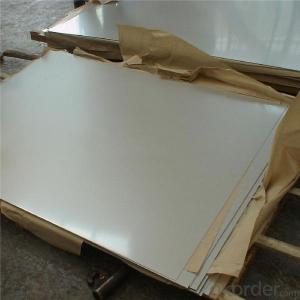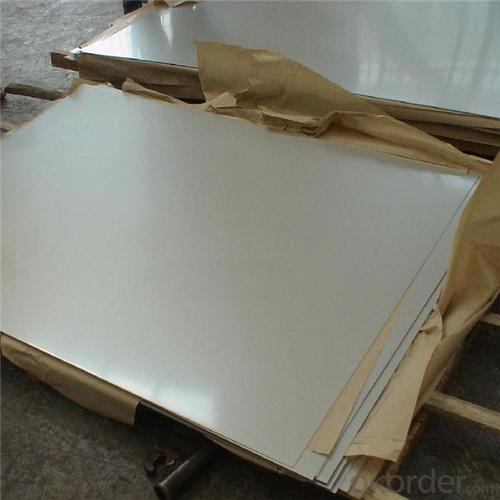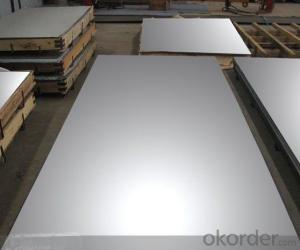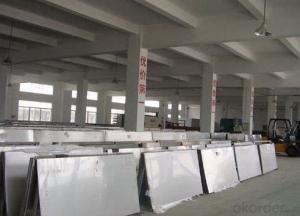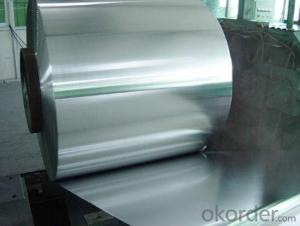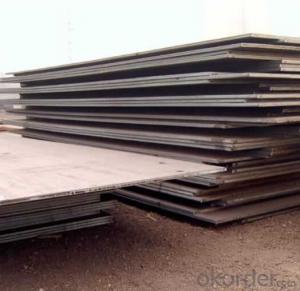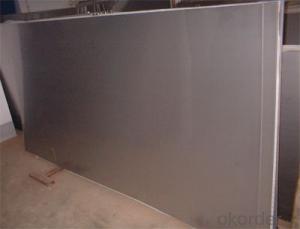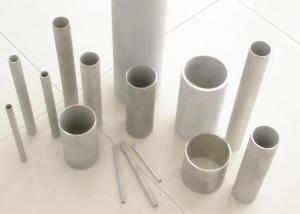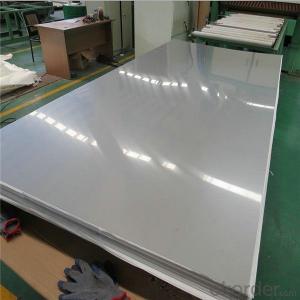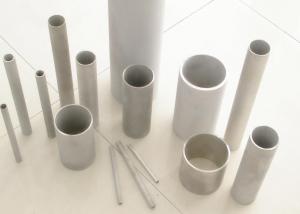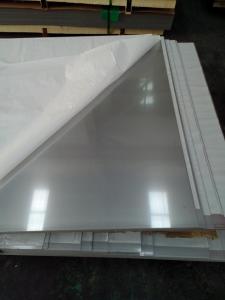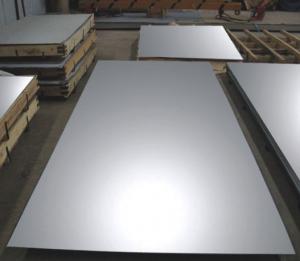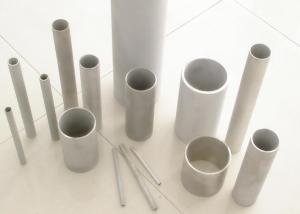Manufacturer Stainless Steel 304 321 316 plate for industry
- Loading Port:
- Shanghai
- Payment Terms:
- TT OR LC
- Min Order Qty:
- 6 m.t.
- Supply Capability:
- 1000 m.t./month
OKorder Service Pledge
OKorder Financial Service
You Might Also Like
Specification
Manufacturer stainless steel 304 321 316 plate for industry
Product Description
We have bulit strategetic partnership with TISCO, POSCO, BAOSTEEL, JISCO LISCO several years. Customers shouldn't have concern with our products, product could endure time.
Type: 201, 202, 304, 304L, 309S, 310S, 310H , 314 ,316, 316L, 316Ti, 317, 317L, 347, 347H , 321, 403 , 405 ,409, 409L, 410 , 410L , 420, 429 , 430, 434 ,444, 904L , 2014 and 2205 ,Uranus 65 ,C126
Martensite-Ferritic: Ss 405 , 409, 409L, 410, 420, 420J1 , 420J2 , 420F , 430 ,431 sheet / plate;
Austenite Cr-Ni -Mn: Ss 201 sheet, ss 202 sheet, J4 ss coil;
Austenite Cr-Ni: SS 304 sheet, SS 304L sheet, ss 309S sheet, ss 310S plate;
Austenite Cr-Ni -Mo: Stainless steel 316 plate, stainless steel 316L plate;
Super Austenitic: 904L Stainless steel sheet , 2205 stainless steel sheet ,253MA stainless steel plate 254SMO stainless steel plate , 654MO stainless steel Plate,
Duplex : S32304 , S32550 ,S31803 ,S32750
EN Standard:
Austenitic: 1.4372 ,1.4373, 1.4310, 1.4305, 1.4301, 1.4306 , 1.4318 ,1.4335, 1.4833 , 1.4835 , 1.4845, 1.4841, 1.4401 , 1.4404 , 1.4571 ,1.4438, 1.4541 , 1.4878 , 1.4550 , 1.4539 , 1.4563 , 1.4547
Duplex: 1.4462 , 1.4362 ,1.4410 , 1.4507
Ferritic :1.4512, 1.400 , 1.4016 ,1.4113 , 1.4526 ,1.4521 , 1.4530 , 1.4749 ,1.4057;
Martensitic: 1.4006 , 1.4021 ,1.4418 ,S165M ,S135M;
GB Standard :
Martensitic: 1Cr12 , 1Cr13Mo , 0Cr13 ,1CR13 ,2Cr13 , 3Cr13 , 4C13 , 7Cr17 , 8Cr17 ,11Cr17 , 9Cr18Mo ;
Ferritic: 00Cr12 ,1CR17 ,0Cr13AL , 1Cr17Mo , 1Cr15 , 1Cr25Ti , 00Cr17 , 00Cr18Mo2 00Cr27Mo ;
Chemical Composition
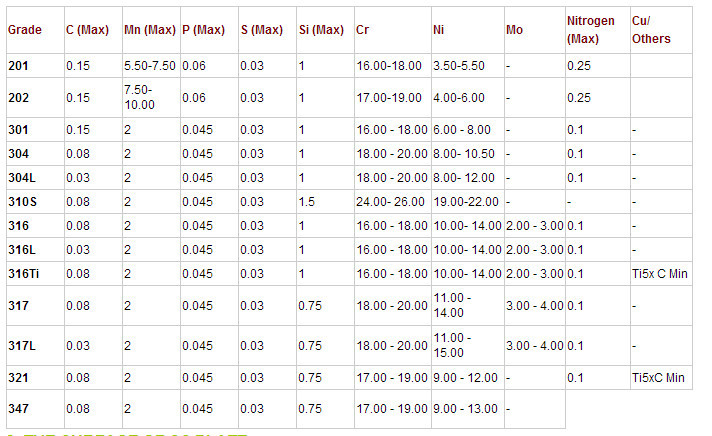
Packaging & Shipping
1.Packaging:All products are packaged according to the Standard export packing.In order to prevent friction damage and water erosion and so on.
2.Shipping: Ocean transportation,land transportation or air transportation.
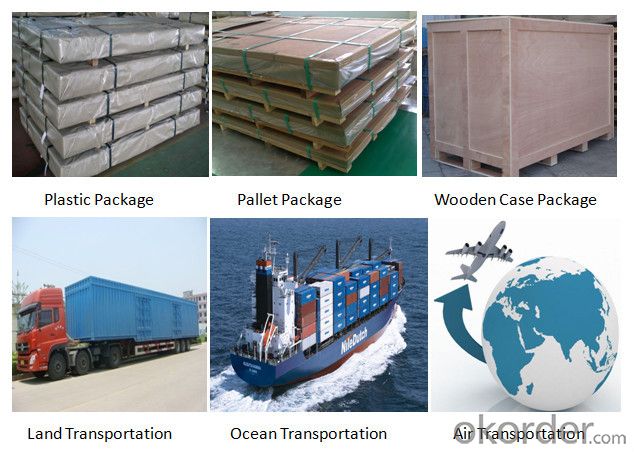
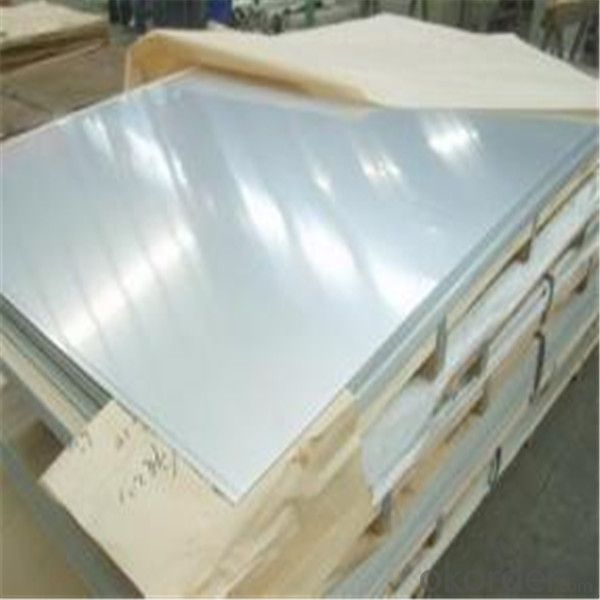
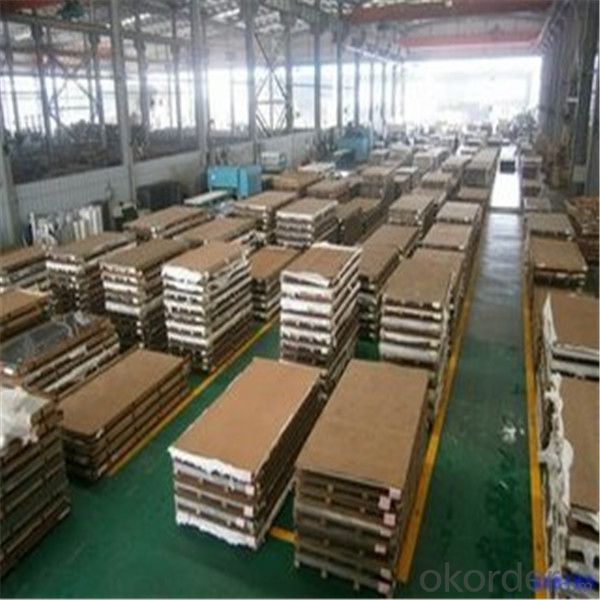
- Q: Can stainless steel sheets be used for outdoor railings?
- Yes, stainless steel sheets can be used for outdoor railings. Stainless steel is a popular choice for outdoor applications due to its durability and resistance to corrosion. It is able to withstand exposure to various weather conditions, such as rain, snow, and sunlight, without deteriorating or rusting. Stainless steel railings provide a sleek and modern look to outdoor spaces, while also offering strength and stability. Additionally, stainless steel is low maintenance and easy to clean, making it an ideal material for outdoor railings that may be subjected to dirt, dust, or other debris. Overall, stainless steel sheets are an excellent choice for outdoor railings, offering both aesthetic appeal and long-lasting performance.
- Q: What is the difference between stainless steel sheets and plates?
- Stainless steel sheets and plates are both types of flat metal materials that are widely used in various industries and applications. However, there are a few key differences between them. 1. Thickness: Stainless steel sheets are generally thinner than plates. Sheets typically have a thickness ranging from 0.4mm to 4mm, whereas plates are usually thicker, starting from 4mm and going up to several inches. 2. Size: Sheets are typically available in standard sizes of 4ft x 8ft or 5ft x 10ft, while plates are usually available in larger sizes and can be customized to specific dimensions. Plates are commonly used for heavy-duty applications that require greater strength and durability. 3. Weight: Due to their difference in thickness, plates are generally heavier than sheets. This makes plates more suitable for applications where weight-bearing capacity is critical, such as construction, shipbuilding, or industrial equipment. 4. Applications: Stainless steel sheets are commonly used for decorative purposes, architectural applications, and smaller-scale projects such as kitchen backsplashes or countertops. Plates, on the other hand, are preferred for structural components, machinery parts, and load-bearing applications like bridges, tanks, or pressure vessels. 5. Cost: Stainless steel plates are generally more expensive than sheets due to their larger size and higher thickness. Sheets, being thinner and smaller, are usually more cost-effective and easily accessible. In summary, the key differences between stainless steel sheets and plates are their thickness, size, weight, applications, and cost. It is important to consider these factors when choosing between the two materials for a specific project or application.
- Q: How do stainless steel sheets resist corrosion?
- Due to its unique composition and the presence of a protective oxide layer, stainless steel sheets have the ability to resist corrosion. Stainless steel is comprised of iron, chromium, and other alloying elements like nickel and molybdenum. Chromium is particularly essential for the corrosion resistance of stainless steel. When exposed to oxygen, chromium creates a thin and invisible oxide layer on the surface of the stainless steel, which is referred to as the passive layer. This passive layer acts as a barrier, preventing oxygen and moisture from reaching the underlying metal and safeguarding it against corrosion. This layer is the reason why stainless steel is called "stainless," as it remains free from rust and corrosion. The chromium oxide layer has the ability to self-repair and reform if it gets damaged or scratched, ensuring continuous protection for the stainless steel. This characteristic enables stainless steel sheets to be utilized in various environments, including those with high humidity, exposure to chemicals, and even saltwater. Furthermore, alloying elements such as nickel and molybdenum enhance the corrosion resistance of stainless steel. Nickel enhances the stability and strength of the passive layer, while molybdenum improves resistance against pitting and crevice corrosion. Moreover, surface finishes like polishing or passivation can provide additional protection against corrosion for stainless steel sheets. These processes eliminate any contaminants or impurities from the surface and promote the formation of a stronger and more uniform passive layer. In conclusion, the combination of chromium, other alloying elements, and the protective oxide layer makes stainless steel sheets extremely resistant to corrosion, ensuring durability and longevity in a wide range of applications.
- Q: Can stainless steel sheets be used for solar panel frames?
- Solar panel frames can indeed be made from stainless steel sheets. The use of stainless steel is quite popular for solar panel frames because of its exceptional strength, durability, and resistance to corrosion. It can endure various weather conditions, such as extreme heat, humidity, and exposure to sunlight. In addition, stainless steel is both non-magnetic and non-combustible, ensuring the safety of solar panel installations. Moreover, its high strength-to-weight ratio permits lighter frame designs, reducing the overall weight of the solar panels and facilitating their installation. All in all, stainless steel sheets are a dependable and enduring choice for constructing solar panel frames.
- Q: Are stainless steel sheets suitable for medical equipment?
- Yes, stainless steel sheets are highly suitable for medical equipment. They possess excellent characteristics such as corrosion resistance, durability, and ease of cleaning, making them ideal for medical environments where cleanliness and hygiene are crucial. Stainless steel's non-porous surface also helps prevent the growth of bacteria, making it a safe and hygienic choice for medical equipment manufacturing.
- Q: Can stainless steel sheets be used for countertops or backsplashes?
- Yes, stainless steel sheets can be used for countertops and backsplashes. Stainless steel is a durable material that is resistant to stains, heat, and bacteria, making it an excellent choice for kitchen surfaces. It is easy to clean, maintains its appearance over time, and can withstand heavy use. Stainless steel countertops and backsplashes are commonly used in commercial kitchens due to their hygienic properties, but they are also becoming increasingly popular in residential settings for their sleek and modern look.
- Q: How do I clean and maintain stainless steel sheets?
- To effectively clean and maintain stainless steel sheets, adhere to these straightforward guidelines: 1. Commence by eliminating any loose dirt or debris from the surface. Employ a soft cloth or sponge soaked in warm water. 2. For more stubborn stains or fingerprints, combine a mild detergent with warm water. Administer this mixture to the sheet using a non-abrasive sponge or cloth. Thoroughly scrub the affected area, following the grain's direction. 3. Rinse the sheet meticulously with clean water, ensuring the removal of any detergent residue. 4. To prevent the formation of water spots or streaks, delicately dry the stainless steel sheet with a soft cloth. 5. For sustained shine and future stain protection, apply a small quantity of stainless steel cleaner or polish to a clean, soft cloth. Employ circular motions, avoiding any circular rubbing. 6. Eliminate any surplus cleaner or polish using a separate clean cloth, guaranteeing a uniform finish. 7. In cases of obstinate stains or scratches, a stainless steel cleaner containing mild abrasives may be utilized. However, exercise caution as improper usage may result in surface scratching. 8. Refrain from utilizing abrasive sponges, steel wool, or harsh chemicals, as these substances can inflict damage upon the stainless steel surface. 9. Regularly dust the stainless steel sheets with a soft cloth to deter the accumulation of dirt or dust particles. 10. Lastly, it is essential to consult the manufacturer's instructions for specific cleaning and maintenance recommendations tailored to your particular stainless steel sheet product.
- Q: How do you prevent discoloration or staining on stainless steel sheets?
- To prevent discoloration or staining on stainless steel sheets, there are several steps one can take. First, it is important to clean the sheets regularly using mild soap or detergent and warm water. Avoid abrasive cleaners or scrub brushes that could scratch the surface. After cleaning, rinse thoroughly with clean water and dry with a soft cloth to prevent water spots. In addition, it is crucial to avoid using harsh chemicals like bleach, ammonia, or chlorine-based cleaners on stainless steel sheets. These chemicals can cause discoloration or staining. Instead, opt for stainless steel-specific cleaners or natural alternatives such as vinegar or lemon juice. Proper storage is also essential. Stainless steel sheets should be kept in a clean and dry environment to prevent exposure to moisture or humidity. Moisture can lead to corrosion or rust, resulting in discoloration. If the sheets are stored outdoors, make sure to adequately cover them to protect against rain or snow. Applying a protective coating or sealant on stainless steel sheets can help prevent discoloration or staining. There are various products available specifically designed for stainless steel protection. It is important to follow the manufacturer's instructions for application and reapplication if necessary. Furthermore, it is important to avoid contact between stainless steel sheets and other reactive metals such as iron, copper, or aluminum. When these metals come into contact with stainless steel, a chemical reaction called galvanic corrosion can occur, leading to discoloration and staining. To prevent this, ensure separation or isolation between stainless steel and reactive metals. Regular maintenance is crucial in preserving the appearance and integrity of stainless steel sheets. Regularly inspect the sheets for any signs of discoloration, staining, or damage. Address any issues promptly to prevent further deterioration. If stubborn stains are present, use a non-abrasive stainless steel cleaner and a soft cloth to gently rub the affected area in the direction of the grain. By following these preventive measures, the appearance and integrity of stainless steel sheets can be maintained, ensuring they remain free from discoloration or staining for an extended period of time.
- Q: What is the lifespan of stainless steel sheets?
- The lifespan of stainless steel sheets can vary depending on various factors such as the grade of stainless steel used, the environment it is exposed to, and the level of maintenance it receives. However, with proper care and maintenance, stainless steel sheets can last for several decades or even longer.
- Q: What welding equipment do we need for welding stainless steel sheet and stainless steel square tube?
- 1 mm thick enough, basically argon arc welding machine can, 0.2 thick stainless steel plate welding is not good ah, how have three or four points it can be positive or negative, only a few joints only, mainly to see the technology myself you, not what, the polishing wheel is on the line let's do it, you can buy a good quality of argon arc welding machine, the high price of the arc is stable
Send your message to us
Manufacturer Stainless Steel 304 321 316 plate for industry
- Loading Port:
- Shanghai
- Payment Terms:
- TT OR LC
- Min Order Qty:
- 6 m.t.
- Supply Capability:
- 1000 m.t./month
OKorder Service Pledge
OKorder Financial Service
Similar products
Hot products
Hot Searches
Related keywords
